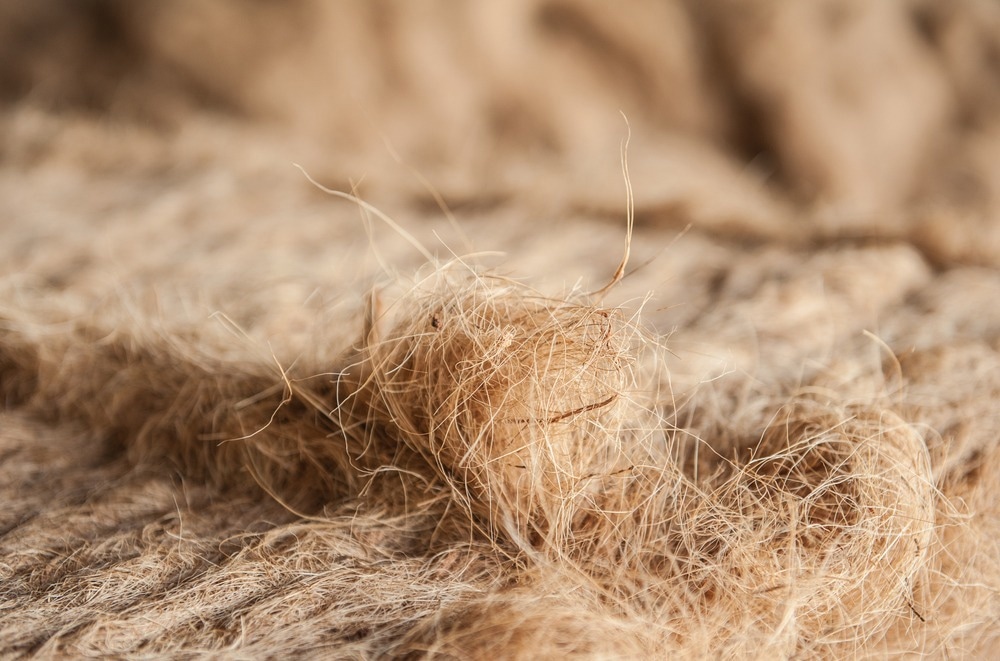Scientists from Nanjing Forestry University’s College of Materials Science and Engineering have presented a review of the current state of 3D printing with natural fibers. Their work has appeared in the journal Materials & Design.

Study: 3D printing of natural fiber and composites: a state-of-the-art review. Image Credit: somsak suwanput/Shutterstock.com
Using Natural Fibers in Materials Research and Industry
The urgent need for materials that can address the environmental damage caused by industrial activity and growing urbanization has led to intensive research on sustainable alternatives to conventional materials used in multiple industries.
Natural fibers are derived from biomass by-products from the agricultural and forestry industries. Fibers are obtained from several commercially important natural materials such as wood, bamboo, nut shells, reeds, and food crops. These green materials have benefits such as low cost, resource abundance, sustainability, renewability, good biodegradability, non-toxicity, and comparable mechanical properties to some conventional materials.
The main components of natural fibers are cellulose, lignin, and hemicellulose. Recent research has focused on utilizing additive manufacturing processes to print these materials for use in several commercially valuable products.
These macro-molecular biomass materials can be incorporated into other materials to create sustainable, eco-friendly composites. Natural fibers can be mixed with polymer or gel matrices as reinforcing additives, compatibilizers, and plasticizers.
Beneficial mechanical and physical properties of natural fiber-reinforced composites include reduced weight, high modulus and specific strength, high biodegradability, and affinity compared to conventional synthetic fiber-reinforced composites. Because of these advantageous properties and their environmental benefits, natural fiber-reinforced composites are considered ideal materials for a sustainable and circular economy.
Considering Specific Characteristics of Natural Fiber Composites
Whilst they possess several advantages over synthetic fiber-reinforced composites, there are some issues that require increased research focus on natural fiber-reinforced composites before they can be considered for full commercialization.
Composites of natural fibers and thermoplastics require the selection of specific processing techniques to enhance their performance due to the different characteristics of natural fibers compared to their synthetic counterparts. These include variable properties, changes in chemical composition, thermal instability, and moisture absorption.
Cellulose, which is one of the main components of natural fibers, is composed of different types of cellulose, including microcrystalline cellulose, cellulose nanocrystals, and cellulose nanofibers. Hemicellulose and lignin possess enhanced hydrophilicity compared to cellulose, but the current commercial viability of these components is limited due to challenges such as poor interfacial adhesion and wear Van der Waals forces.
Due to these limitations, commercial research into natural fiber-reinforced thermoplastic composites is challenging. Effective modification methods to improve the characteristics of these sustainable composites are urgently needed.
3D Printing Natural Fiber-based Composites
3D printing (additive manufacturing) provides several opportunities for producing high-performance and high-quality composite materials. 3D printing techniques possess benefits over traditional manufacturing methods, including significantly reduced waste, design freedom, and multi-material printing capabilities.
Utilizing 3D printing techniques for biomass-based natural fiber-reinforced composites makes it possible to manufacture eco-friendly sustainable devices cost-effectively and efficiently, with complete design freedom, complex and innovative architectures both on the macro- and micro-scale with the minimum of waste material. Devices with functional elements can be tailored according to consumer needs.
The Study
Recognizing the current challenges with manufacturing commercially viable natural fiber-reinforced composites, the authors have presented an in-depth and timely review of the current state of this field of materials science research. The review has focused on producing composites with 3D printing techniques.
The review paper discusses key elements of current research knowledge. Firstly, an overview of the basic properties of natural fibers is presented, along with the properties of derivatives.
Secondly, the authors discuss key issues with printing bio-derived materials using additive manufacturing techniques, including the properties which affect print quality, including rheological, thermal, interfacial bonding, mechanical, and interlaminar effects. Additionally, the structural properties of the final products are discussed.
Several composite materials have been highlighted in the review, including polymer-based natural-fiber degradable composites, cellulose-based composites, hemicellulose-based materials, lignin-based composites, cellulose-gel-based materials, and various natural fiber-based aerogels and hydrogels. One hundred and sixty-six current papers have been reviewed in the study.
3D Printed Natural Fiber Composite Applications
The study has highlighted some of the potential applications of natural fiber-reinforced composites, which are proving innovative in several industries, providing benefits including improved eco-friendliness and sustainability.
The biomedical industry in particular has researched 3D printing extensively due to the design freedom it brings for producing complex devices such as prostheses and drug delivery systems. Natural fibers possess advantages such as non-cytotoxicity, biodegradability, and extraordinary mechanical properties.
Other industries that this field can aid include microelectronics, microfluidics, smart materials, and flexible robots. Current research into additively manufactured natural fiber-reinforced composites is providing some intriguing and innovative advances that will advance several fields of material science and industry.
In Summary
Research into manufacturing composites that incorporate sustainable, renewable, non-toxic, and biodegradable natural fibers is one of the most innovative and exciting areas of materials science currently.
By providing a comprehensive and timely review of the current state of the field and the use of 3D printing to produce functional and advanced composite materials and devices, the paper in Materials & Design will provide future researchers with a valuable knowledge base.
More from AZoM: How Does Laser Cleaning Technology Function?
Further Reading
Bi, X & Huang, R (2022) 3D printing of natural fiber and composites: a state-of-the-art review Materials & Design 111065 [online, pre-proof] sciencedirect.com. Available at: https://www.sciencedirect.com/science/article/pii/S0264127522006876
Disclaimer: The views expressed here are those of the author expressed in their private capacity and do not necessarily represent the views of AZoM.com Limited T/A AZoNetwork the owner and operator of this website. This disclaimer forms part of the Terms and conditions of use of this website.